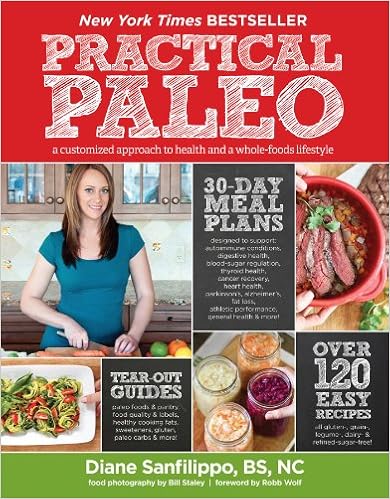I know your secret:
you want abs. Visible. Freaking. Abs. You work hard at the gym damnit. “When do I get to trade in this keg for a six, eight, or eleventy pack?” You know they’re already there, they’re just hiding.
Really, you could care less for all the cardio, metcon, strength, “functional fitness” in the world. “Blah, blah, blah,” Coach says. If you could just have visible abs, none of that would matter, and you could chuckle from your throne and make decrees while smugly eating an apple. “Why won’t he just cut the crap and show me teh abz secrets?!”
Ok, maybe some of you don’t want abs *gasp*. They’re gross or manly or whatever. Truly, I don’t understand this mentality, so for this article I’m going to sidestep that land mine completely, and just get real about what it really takes to develop visible abs! Here. We. Go.
1) Visible abs are primarily dependent upon your bodyfat percentage.
Everyone has abdominal muscles of course. You have the muscle fibers, they literally are there, we promise. Along with an entire chain of anterior hip and spinal flexors and stabilizers that extend well past and around your abs, but I digress.
Your bodyfat percentage is a function of two things: your lean mass (which for most purposes includes bones, organs, water, etc. — basically anything but the fat), and your fat mass. Body Fat Percentage = Fat Mass/(Lean Mass + Fat Mass)*100%. Boom. That’s it.
Now, because of the complexities of age, sex, height, bone density, individual levers/proportions, etc., there are all kinds of fancy empirical formulas and methods to more or less accurately approximate this number, which is why you can google it and find many different calculators and formulas. Or you can use skin calipers, or get a hydrostatic test done (we had one at the gym recently!). But at their core they are all trying to derive the above simple relationship.
I could now delve into the body fat percentage diagram/chart shown below, and talk about different cohorts and ranges and goals, but I won’t, because the main thrust of this post actually isn’t about chasing a number. I will also submit to you, while this information/number can be useful, for the purposes of developing visible abs, all that matters is that we are causing change that ultimately drives it down to a certain point. The number itself will vary widely, and won’t matter much once you get there, just like the exact circumference of your biceps probably won’t matter much to you as long as you can effectively tell people where to get tickets to The Gun Show, or — unless you’re Scrooge Mc-OCD-Duck — knowing exactly how much money is in your bank account won’t matter if you’re a million/billionaire.

Based on the above simple formula, you can decrease your body fat percentage by doing one or both of two things:
1) decrease your fat mass
2) increase your lean mass (the muscle part of it anyway)
Because for the most part the average person does not have a severe deficit of muscle mass in this region (you need a certain amount of basic muscle mass and strength in this region to not collapse into a heap), but more likely a surplus of fat mass, the latter is the thing we tend to target first/most. Decrease your fat mass! Duh, right?
*Drum roll* Changes in fat mass are overwhelmingly affected by your diet!

2) Nutrition Matters
Yes, it’s true, as the saying goes: “[Visible] abs are made in the kitchen.” You could probably fill many libraries with just diet books written specifically to help people lose fat mass and by proxy gain teh abz. And you’d mostly have some really good kindling for a fire. At the risk of inviting some internet gurus to weigh in and “school me” into oblivion, I will make a blanket recommendation: Most of you who are struggling with the fat mass part of the equation would benefit greatly from starting a diet based on the Paleo model. It is not the beginning and the end of the conversation, but it is a great starting point for the majority in this cohort, and over time will help you converge on a set of healthy eating practices that suit you best.

Seriously, following Paleo for a good while will get you 80% of the way there. Those of you that “get it” and are able to tweak and adjust it by feel will make it all the way. Others will find that at some point they need a little extra help to shake some old habits, at which point tracking macro-nutrients (“macros”) can be a useful next step. This means starting to understand how much protein, fat, and carbohydrates you are taking in each day, and from what food sources. Going a little further, those of you with a long history of struggle with diet –and having one or a few well-formed addictive behaviors in tow — may need dedicated help working with a nutritionist or dietitian.
But to get back on the main thread — just starting Paleo and/or tracking macros could form a series of long posts all by themselves — I’ll stop here and say: JUST START!
3) Genetics Matter
A certain amount of fat mass is essential and healthy! Women must carry more than men for vital lady-functions, and everyone has a genetic predisposition to carry slightly more or less independent of their diet or physical fitness state. Genetic predi-whooo? What this means is, for example, Annie and Camille (shown below) are both phenomenal athletes, but no matter what Camille does she will probably never develop abs quite like Annie’s. And athletically and health-wise, it may be quite counter-productive for her to attempt to do so. Regardless, either of them could win the CrossFit Games independent of the state of their ab visibility. What this means is that while diet is the most important factor, even if you dial everything in you won’t necessarily display #abslikeannie. Nor would it necessarily be healthy to doggedly pursue this. But, as you lean out you will definitely have some level of visibility, and you should love what you got!


4) What You Do Matters
CrossFit training elicits a powerful neuroendocrine response. Arguably one of the most powerful types of responses due to the training’s multi-faceted demands. Without getting too wonky, in layman’s terms, “powerful neuroendocrine response” means when you’re in the middle of an intense metcon thinking “OMG I’m dying!”, your body is taking notes, and when the dust settles it begins taking steps to ensure that the next time you subject it to a similar stressor, it will be better prepared (assuming you fuel and recover it properly also). Basically, you are an adaptation machine! A barbell may not bend in your hands, but it also does not become stronger from your attempts to bend it (nerdy aside: if the strain is outside of its elastic range, it will eventually break!). Your body does. As the saying goes (sort of), a stimulus that doesn’t kill you (or injure or over-train you) makes you “stronger,” or more resilient to that stimulus and its kin in future instances.
5) Stimulus Type Matters
A key part of this adaptation is a natural optimization of the amount and distribution of muscle and fat throughout the body, in response to the repeated bouts of intense stimuli that drive it. In short, proper, consistent CrossFit training over time will sculpt you (how much so depends on many factors, like the genetic and recovery elements mentioned above), even though this is not the main goal of functional training. We train our bodies to accomplish tasks and feats, and to not suck at life ;). The aesthetic results are a natural, positive side effect of this.
Good, classic CrossFit programming is that ideal stimulus. Doing extra stuff like ab work and cardio can be a nice bonus (or counter-productive if it saps your energy for the main WODs), but good CrossFit programming is quite literally the evolution of optimizing the things that give you the greatest possible return on your time and energy investments. Make sure you are making the most of the workouts we program first before you get all gung-ho for extra credit things.
6) What Actually Matters, Matters!
Next, is a big myth we need to dispel. There is no such thing as locally reducing fat mass, i.e. “toning your abs”, arms, what have you. You can only reduce body fat globally. This means across your entire body, although how this presents/displays may vary locally due to individual hormonal and genetic variations. Some people lose fat in certain areas first, other areas last (often the butt!), but it’s not because they’re “targeting” that area. Read this paragraph again two or three more times for it to set in.
Blasting out a set of GHD sit-ups is the same as bros doing a bunch of push-ups before taking off their shirts at the beach. It causes some short term local inflammation (“pump”) in the muscles, but is not the same as being strong or lean.
Nevertheless, it makes me happy when I see people doing dedicated ab work on the side, because the benefits are two-fold:
- Dedicated Ab work makes your core stronger. This enables you to do more in your lifting (better bracing) and metcons (stability under fatigue), and also will bring you closer to your first toes-to-bar, pull-up, and muscle-up. PR time!
- As a result of having a stronger core, you will be able to push many aspects of your training with greater intensity for longer durations, which in turn causes a more intense neuroendocrine response, which will lead to more favorable adaptations sooner. Tangentially, this will help in your Ab Quest.
7) Perhaps None of This Matters!
I hope this article will help those of you who are determined to achieve your goal of visible abs a better picture of what that takes. I also hope, through consistent training, you will begin to see what a small part abs are of your overall fitness and well-being, and that maybe over time you will enjoy training for the cool stuff you can DO as a result of your hard work and the strong core that stabilizes it all, at least as much as the physical appearance that results from being able to do said cool shit.
8) Some Good Add-Ons
Pick your favorite Ab exercise, and get after it! 4 sets AMRAP is usually a pretty good start >=).
- Plank Hold
- Strict T2B
- L-Pull-ups
- Seal Walks
- Kipping Pull-ups
- Kipping Muscle-ups
- Weighted Sit-ups
- GHD Sit-ups






